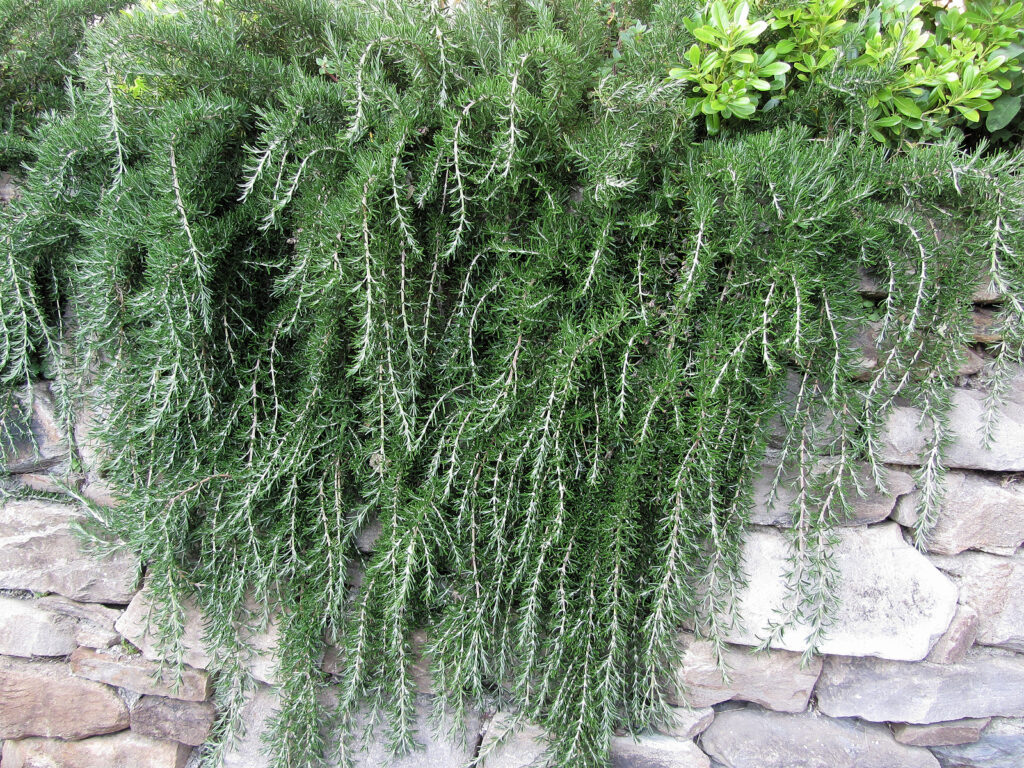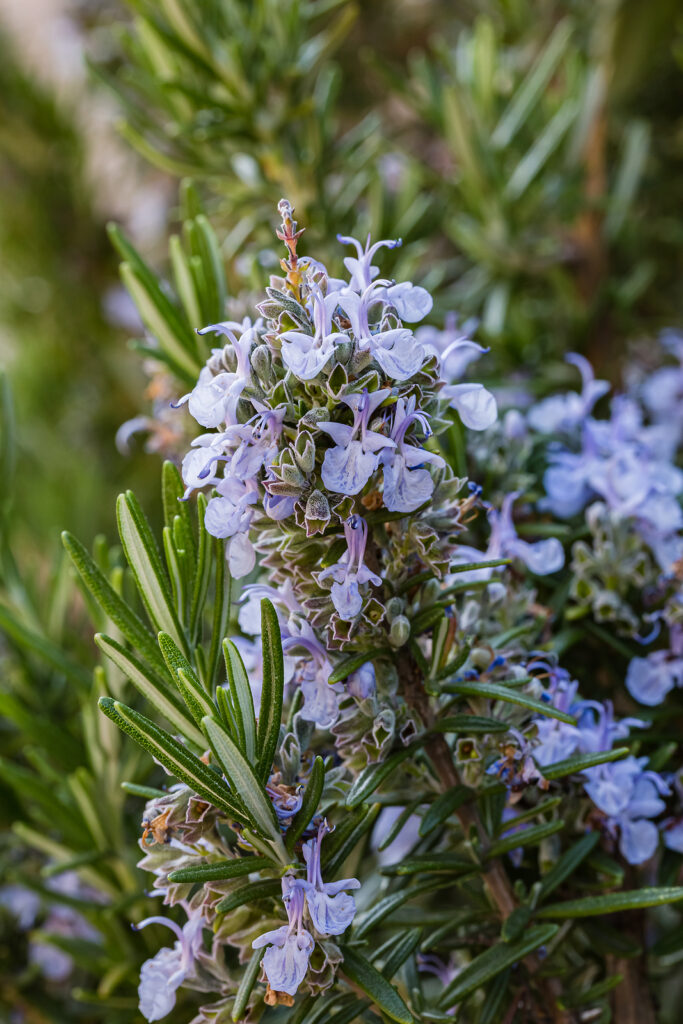Rosmarinus–commonly called rosemary–is a warm-climate, evergreen shrub grown for its fragrant foliage and tiny, usually bright lavender-blue flowers. It is an excellent border or low hedge plant and herb garden plant. It can be grown as a container plant indoors or outdoors. Rosmarinus leaves can be used as a seasoning.
Rosmarinus has leathery dark green needlelike leaves that are white underneath. The tubular, two-lipped blue flower bloom in the leaf axils from winter to early summer. Prostrate varieties can be used on banks or near walls where they will trail and spill. Upright varieties make dense hedges.
Rosmarinus grows best where winters are mild. It requires full sun, excellent drainage, and only moderately fertile soil.
Rosmarinus is a genus of two species of evergreen shrubs from the Mediterranean region.
Get to know Rosmarinus – Rosemary
- Plant type: Evergreen shrub
- Growing zones and range: Zones 8-11
- Hardiness: Half-hardy
- Optimal growing temperature: day 65° to 68°F (18°-20°C), night 50° to 55°F (10°-13°C)
- Height and width: 18 inches (45cm) to 5 feet (1.5m) tall and up to 5 feet (1.5m) wide
- Foliage: Narrow, linear aromatic dark green leaves, fuzzy white underneath
- Flowers: 2-lipped, tubular flowers borne in short axillary whorls
- Bloom time: Winter into spring
- Uses: Mixed border, hedge, rock garden, herb garden, houseplant
- Common name: Rosemary
- Botanical name: Rosmarinus
- Family name: Lamiaceae
- Origin: Mediterranean region

Where to plant Rosmarinus
- Light outdoors: Grow Rosmarinus in full sun.
- Light indoors: Bright light wiht 4 hours of direct sun daily from western or southern exposure; does well under artificial light, needing 14 light hours daily.
- Soil outdoors: Rosmarinus grows in poor to moderately fertile soil that is well drained.
- Soil indoors. Pot Rosmariuns in an all-purpose mix.
When to plant Rosmarinus
- Set container-grown Rosmarinus outdoors in spring or autumn.
Planting and spacing Rosmarinus
- Space Romarinus 3 to 5 feet (1-1.5m) apart.
How to water and feed Rosmarinus
- Keep the soil evenly moist; allow the soil to dry between waterings once mature.
- Fertilize Rosmariun with a mild liqiuid fertilizer every 3 to 4 weeks during the growing season.
Rosmarinus care
- Pinch growing tips to retain compact form.
Growing Rosmarinus as a houseplant
- Rosmarinus likes average indoor temperature and need bright direct light and average humidity.
- Grow in an all-purpose, well-drained potting mix.
- Keep the medium evenly moist when the plant is growing; at other times, allow the medium to dry slightly between waterings.
- Fertilize monthly during the growing period with a balance liquid fertilier.
- Pinch growing tips to encourage compact growth.
Rosmarinus pests and diseases
- Rosmarinus is prone to aerial blirhg, bacterial leaf spot, and root rot.

Rosmarinus propagation
- Sow seeds in contianer in a cold frame in spring.
- Root semi-ripe cuttings in summer.
Rosmarinus varieties to grow
- Rosmarinus officinalis, rosemary. Upright to rounded, dense, bushy, aromatic evergreen shrub grows to 5 feet tall and wide, cultivars grow both smaller and larger; linear, leathery dark green leaves to 2 inches long; whorls of tubular, 2-lipped blue flowers 1/2 inch long; bloom midspring to early summer and again in autumn. Cultivars include: ‘Arp’ is slightly hardier and more open; ‘Benenden Blue’ has vivid blue flowers; ‘Prostratus’ grows to 6 inches tall; ‘Tuscan Blue’ is upright and fast growing with dark blue flowers.















